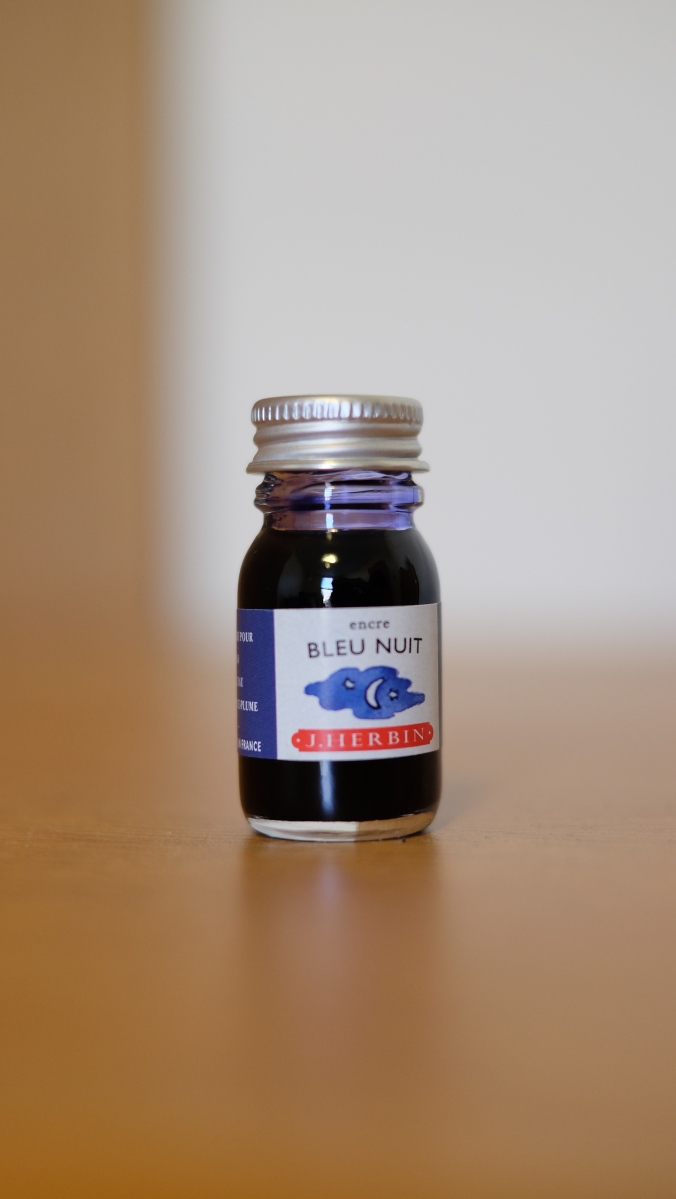
It took some real effort for me to decide to switch up my daily driver ink for another. Usually, I make sure to keep a stable pen that I know I can depend on with an ink that I can trust to not mess up when I’m using an ink I’m going to review in the future. I’ve had bad experiences before with missing an entire class worth of notes because the ink I was testing didn’t properly go with the paper I was using and started to bleed through. After a couple of those experiences, I made sure to always have a backup ready just in case. This semester, I didn’t take as many fountain pens to Indiana, because I wanted to stick to the bare minimum because cleaning can become a hassle. I stuck to my trusty Lamy 2000 and TWSBI ECO. For the entirety of the last semester, I had the Lamy inked up with Iroshizuku Shin-Kai, which quickly became a daily driver of mine and I’m almost finished with the bottle. I needed to review Bleu Nuit, but my TWSBI was already inked up with Bleu Pervenche. So I decided that I needed to switch things up a little bit.
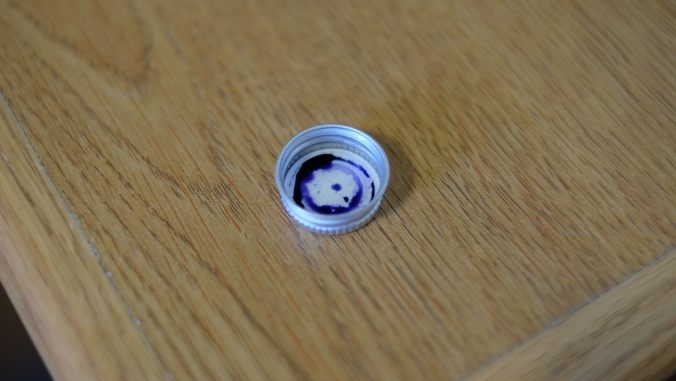
Bleu Nuit is an interesting ink, because of the way it looks straight out of the bottle. Honestly, I was initially skeptical of the color because I saw both the grip of my pen and my hand being stained with a purplish blue color and thought that maybe this was going to be reminiscent of Diamine Midnight. However, once I actually used it, it turned out to be a true neutral blue-black ink. Directly from the nib, it holds a purplish color, but dries to become blue-black with hints of grey undertones. Unlike Diamine Midnight, which acted the opposite way and caused me to dislike the end result.
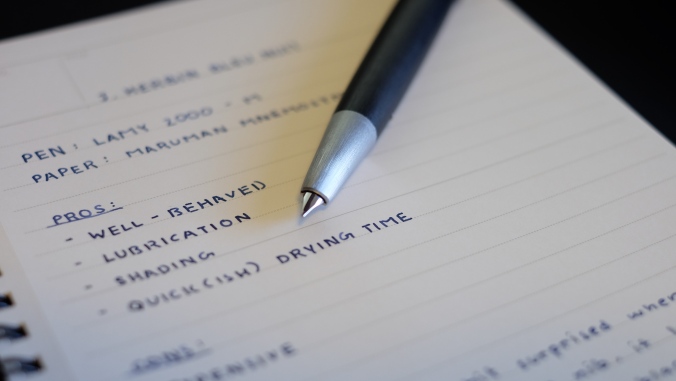
It has all the characteristics that one would expect of a J. Herbin ink. It’s lubricated, well-behaved and there is a decent amount of shading. This was especially accentuated through my use of a slightly wet medium Lamy nib. I’m sure the shading would be turned down if used in a fine or extra-fine, so that’s something to keep in mind if shading is something you look for. As I mentioned above, the color you see in the ink bottle and directly from the nib can confuse you, but be assured that it dries to a neutral blue-black. I honestly enjoyed watching it drying as it looks similar to how Shin-Kai looks when it has dried.
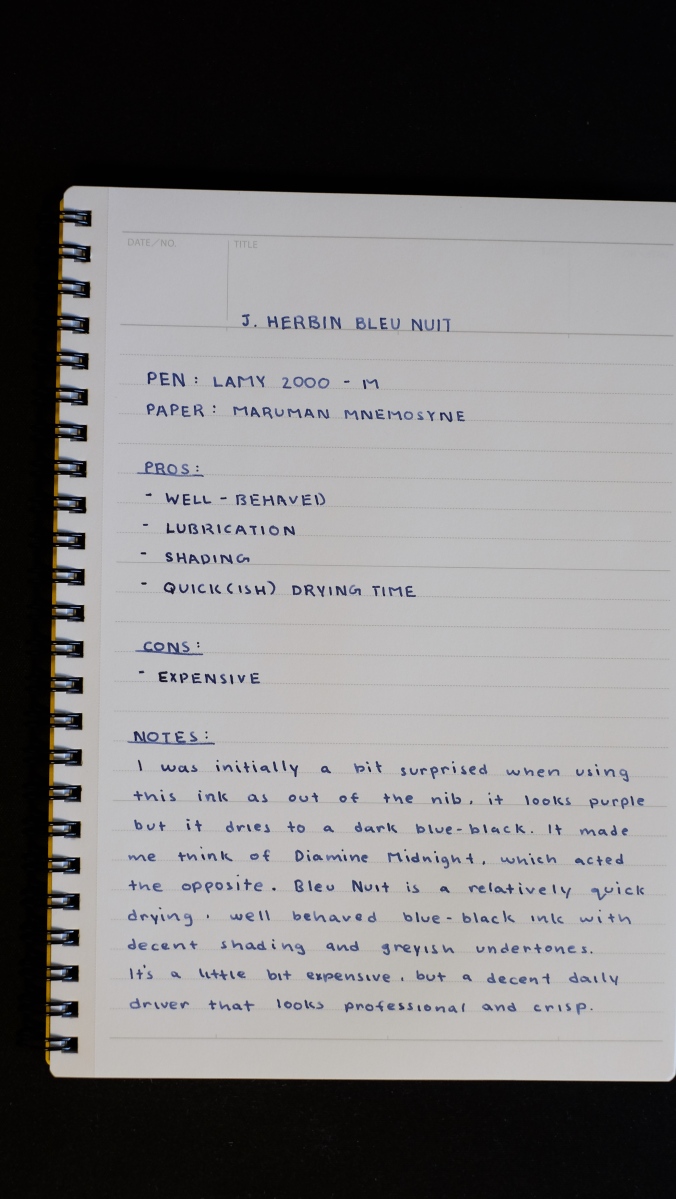
One thing that might be a bit of a drawback with this ink is, as always with J. Herbin, a little bit on the expensive side. The 10mL can be bought for $5.50 on JetPens (not sponsored) and the 30mL can be bought for $12.00 from all your favorite pen shops. On the other hand, Diamine Blue-Black, another great blue-black ink, is priced at $7.50 for 30mL. My advice would be to get the 10mL to test it out and decide if you like it before purchasing any larger sizes.
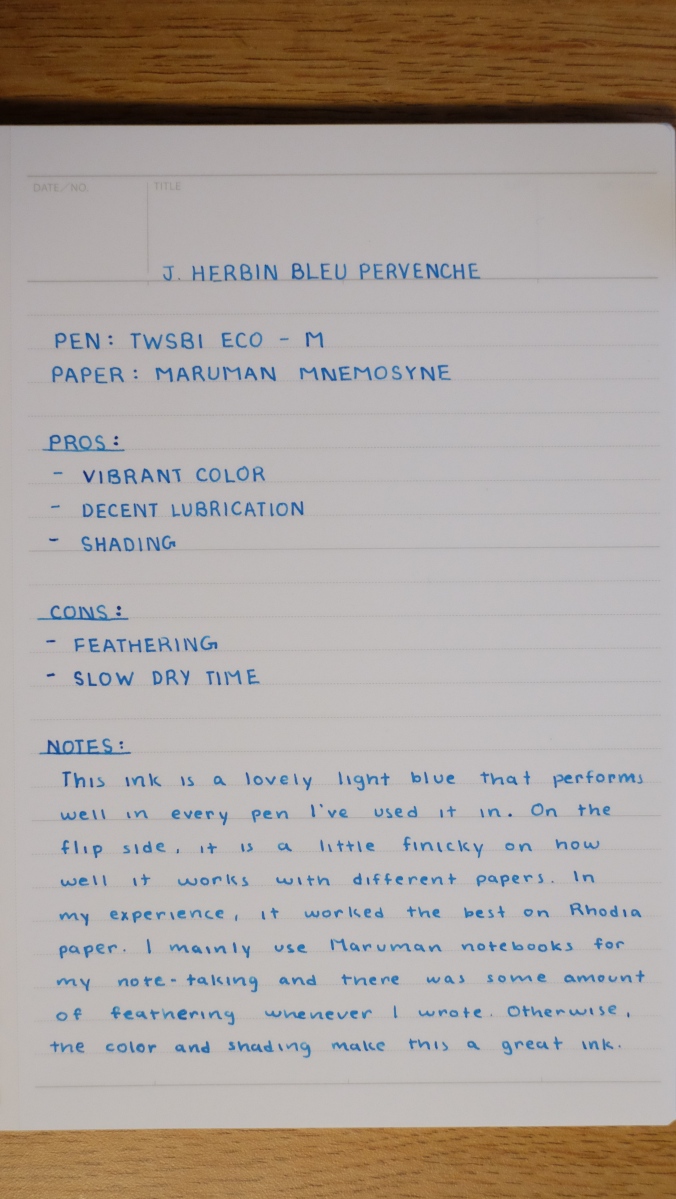
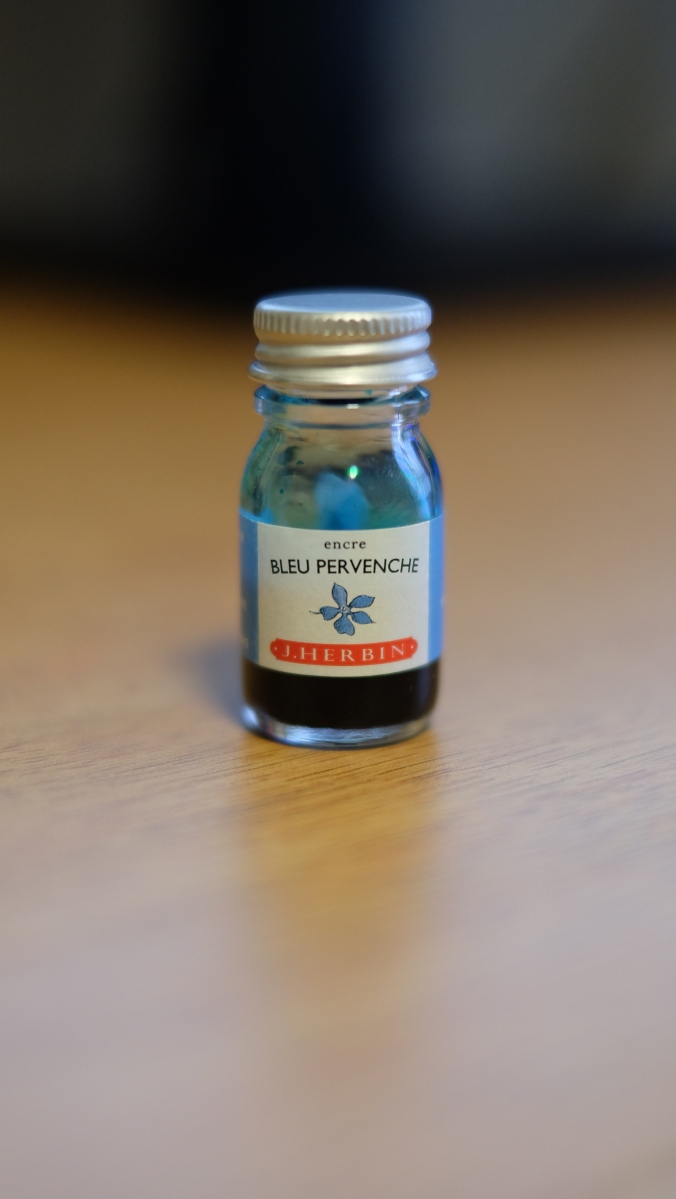
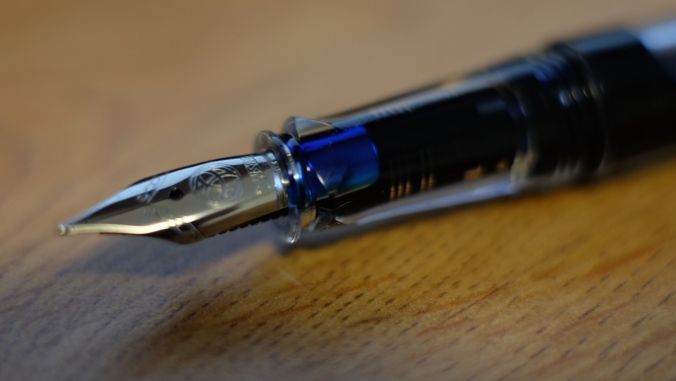
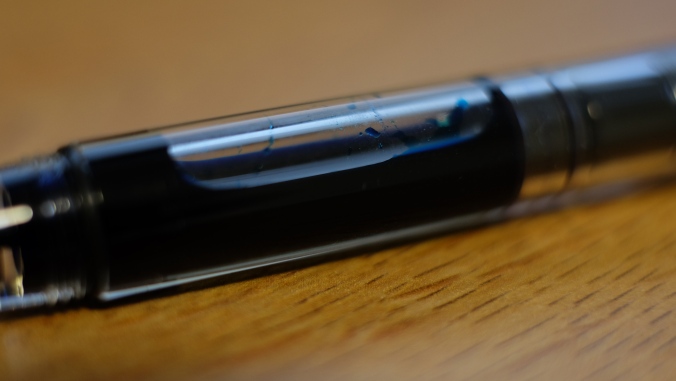




 As you all may know after all this time. I love me some blue inks. Any shade, any brand. You name it, I’m willing to give it a try. I’ve had this ink for almost 2 years now. The ink is almost finished, so I knew I needed to get a review in before it ran out.
As you all may know after all this time. I love me some blue inks. Any shade, any brand. You name it, I’m willing to give it a try. I’ve had this ink for almost 2 years now. The ink is almost finished, so I knew I needed to get a review in before it ran out. By the time I got onto the Sailor bandwagon, I found that some of the inks I really wanted to try had officially been discontinued. I could no longer find Grenade, Epinard and Sky Blue. I was immensely disappointed at not getting the chance to review them, but perked up when Sailor announced that they would be revealing a new Four Seasons ink line that would be the future of Sailor inks. Excited, I waited with bated breath for the Los Angeles International Pen Show to get my hands on some. When I reached, I went straight over to the Anderson Pens booth and got this bottle of Sailor Souten (Azure Sky), the touted successor of the Sky High. I have to say, I was not disappointed at all with my purchase.
By the time I got onto the Sailor bandwagon, I found that some of the inks I really wanted to try had officially been discontinued. I could no longer find Grenade, Epinard and Sky Blue. I was immensely disappointed at not getting the chance to review them, but perked up when Sailor announced that they would be revealing a new Four Seasons ink line that would be the future of Sailor inks. Excited, I waited with bated breath for the Los Angeles International Pen Show to get my hands on some. When I reached, I went straight over to the Anderson Pens booth and got this bottle of Sailor Souten (Azure Sky), the touted successor of the Sky High. I have to say, I was not disappointed at all with my purchase. The performance of Souten is about as expected of any Sailor ink. It behaves well in every pen I ink it up in and shades differently based on the nib size and any special characteristics. While I wrote the review with my Lamy Safari M, I usually used it with my TWSBI 580 Pendleton BLS grind fountain pen. The unique grind on the nib allowed for the shading to really show through.
The performance of Souten is about as expected of any Sailor ink. It behaves well in every pen I ink it up in and shades differently based on the nib size and any special characteristics. While I wrote the review with my Lamy Safari M, I usually used it with my TWSBI 580 Pendleton BLS grind fountain pen. The unique grind on the nib allowed for the shading to really show through. The ink also has a beautiful red sheen when used in a broad or wide italic nib. The red is concentrated around where the ink typically pools inside the letters. However, if you’re using this ink with a fine or extra fine nib, don’t expect any real shading or sheen to show when writing.
The ink also has a beautiful red sheen when used in a broad or wide italic nib. The red is concentrated around where the ink typically pools inside the letters. However, if you’re using this ink with a fine or extra fine nib, don’t expect any real shading or sheen to show when writing. Now for the Sailor performance, you’re going to be paying a rather premium price. This ink typically retails for around $18 at Anderson Pens and other similar retailers, I’ve seen it go for $14.25 on JetPens, which is by far the cheapest I could find it going for. If the price doesn’t bother you, then this is a solid, well-behaved blue that will perform well in any pen you use it in. I recommend this to anyone who likes Sailor inks and wants a nice blue to add to their collection.
Now for the Sailor performance, you’re going to be paying a rather premium price. This ink typically retails for around $18 at Anderson Pens and other similar retailers, I’ve seen it go for $14.25 on JetPens, which is by far the cheapest I could find it going for. If the price doesn’t bother you, then this is a solid, well-behaved blue that will perform well in any pen you use it in. I recommend this to anyone who likes Sailor inks and wants a nice blue to add to their collection.




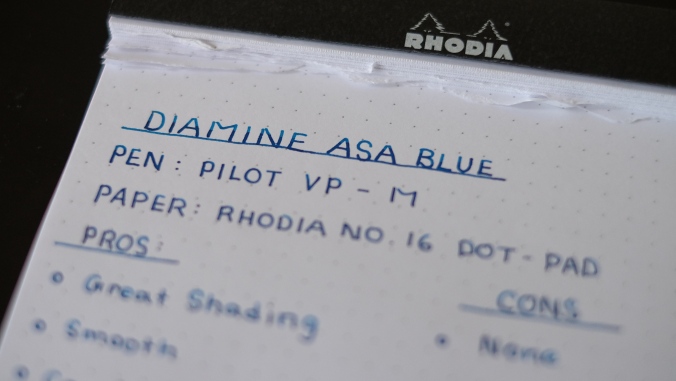


 \
\




